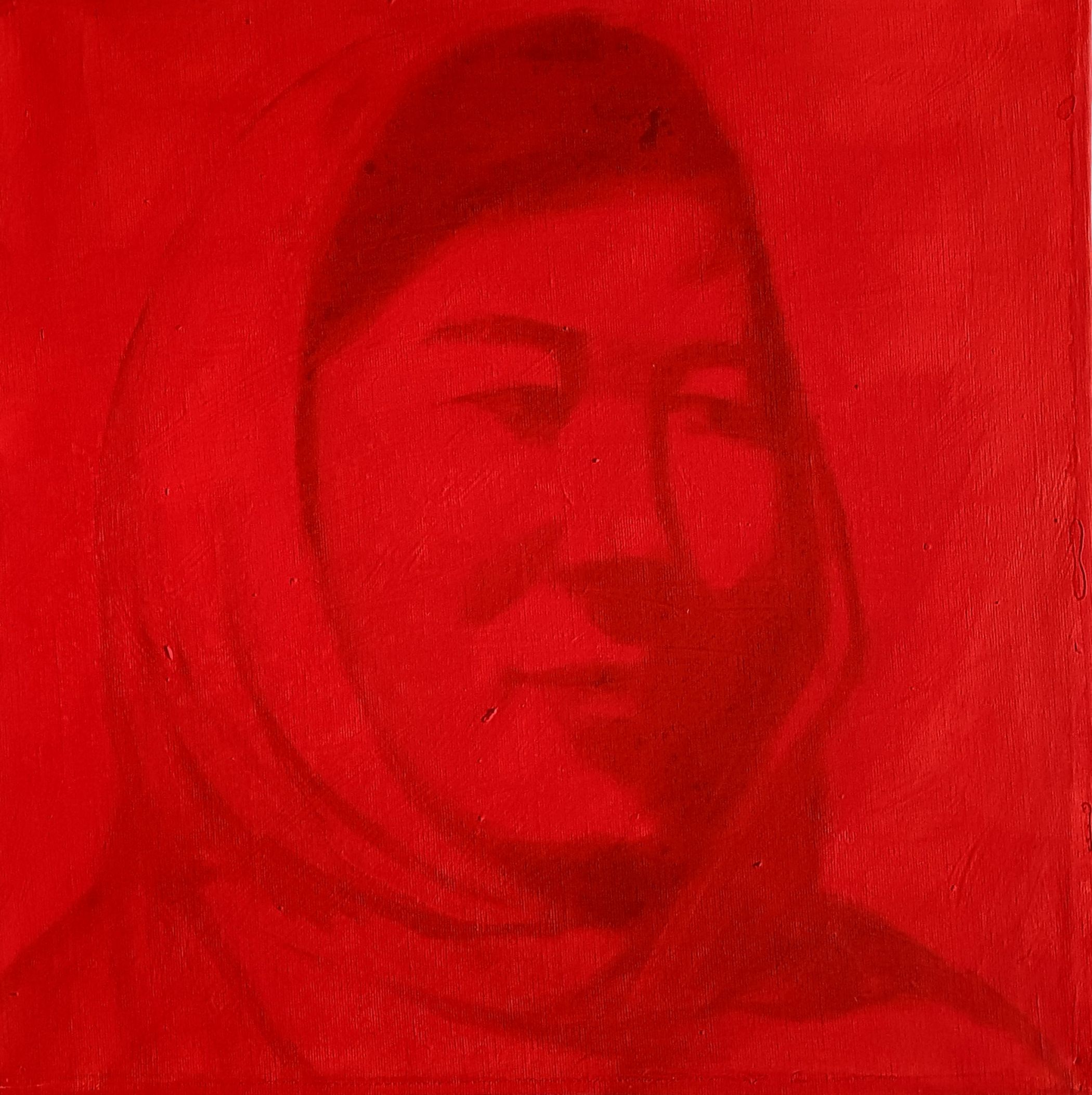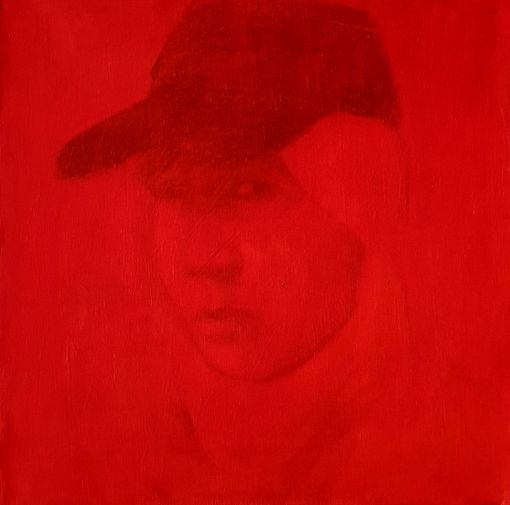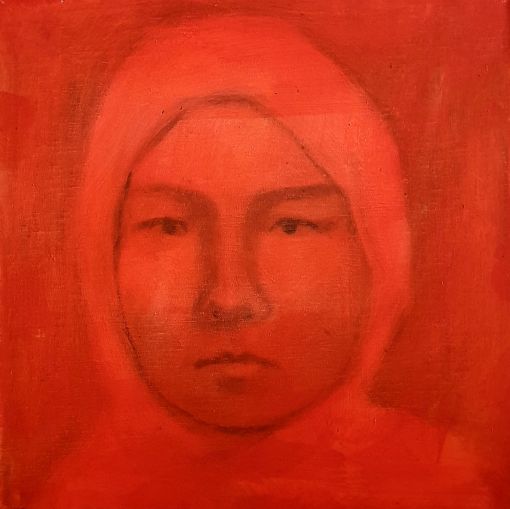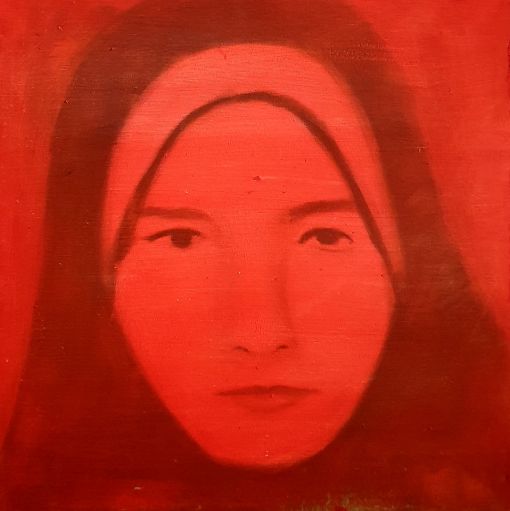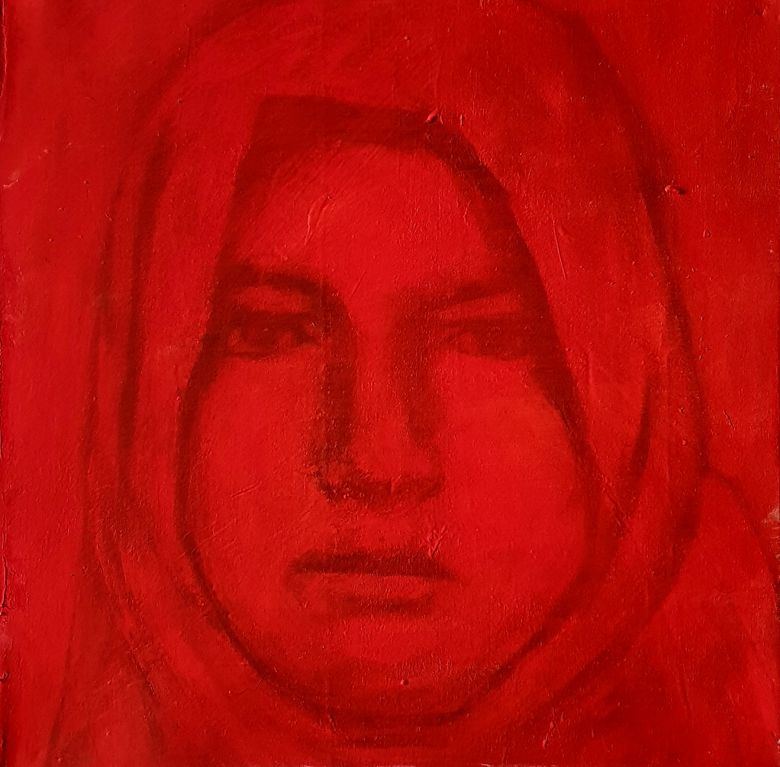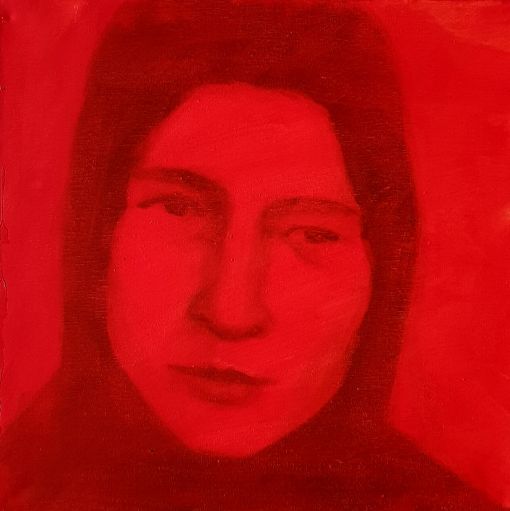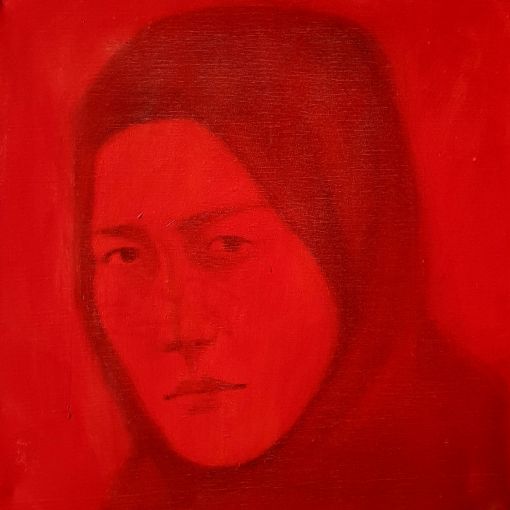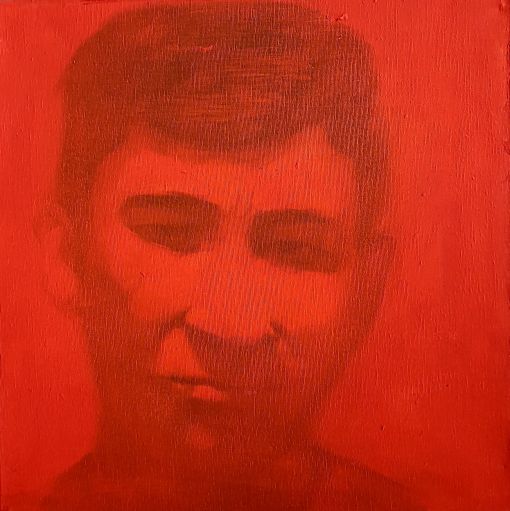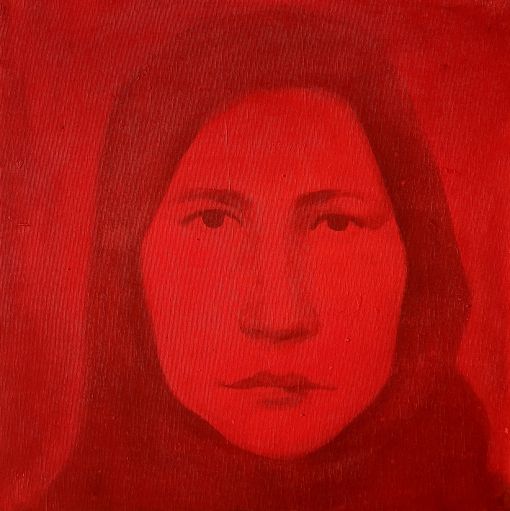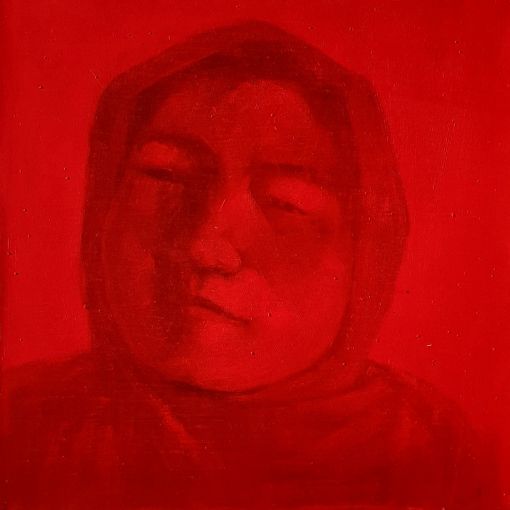Looking beyond Afghanistan’s internal issues, Ali Rahimi addresses global politics, focusing on political situations that have led to immigration and turned it into one of the most complex phenomena of our times. His paintings translate the juridical terms “refugee” and “immigrant” into a visual language, capturing the devastating, crushing silence that reigns in the lives of migrants. Individual figures are suspended in purgatorial conditions, lost in nowhere, searching for a place to belong, a home. Immigrants, or anyone who has experienced displacement or uprootedness and lost their homeland, in one way or another, can find resonances of their experiences in Rahimi’s works.
Large canvases depict small figures subjugated by external conditions and placed against empty backgrounds with seemingly infinite horizons. A limited color palette envelops these figures in a melancholic atmosphere. Purgatorial boats and planes incapable of transporting anyone, crowds of lost individuals, and the spaces between twisted groups of people create a visual language that expresses the anxiety of the migrant condition. Rahimi’s use of chiaroscuro lighting transforms his figures into models or actors on the theatrical stage of the contemporary world. The artist thus addresses not only passive politicians but also every citizen of the so-called global community. Rahimi invites us to be spectators of his works but also to act, participate, or at the very least take a position on the conditions of refugees.
Dasht-e-Barchi
Dasht-e-Barchi (2025) is a series of paintings that refers to the bombings at Sayed al-Shuhada school in Dasht-e-Barchi, Kabul, in 2021, which killed more than ninety people — the majority of whom were girls between the ages of eleven and fifteen. The series is composed of ninety-one portraits, whose arrangement is crucial to the overall presence and resonance of the piece. The small acrylic paintings are presented as a large installation measuring around nine meters long and just over one and a half meters high. Encountering the entirety of the portraits at such a scale intensifies the work’s impact, and the viewer is drawn to walk its length, move closer to the portraits, uncover details, and enter into an embodied dialogue with the piece. These are portraits of the victims, set against red backgrounds. On the rear of each canvas, the person’s name, age, and ethnicity is written. At first glance, one might assume the series is about the ban on girls’ education in Afghanistan, as most of the victims of the attack were female. However, once we read the backs of the canvases and learn the ethnicity of the victims, a different truth is revealed: This bombing was part of an ongoing, broader genocidal campaign against the Hazara people, which has been waged for years.
Throughout Afghanistan’s struggles with external invasions, wars, and internal conflicts, the country has also faced internal radicalism, ethnic conflict, and discrimination. Encountering the series Dasht-e-Barchi, viewers are confronted with the reality of the discrimination and marginalization experienced by the Hazara people in their own homeland. Rahimi documents this horrific catastrophe through the medium of painting while meticulously recording and studying the factual details of the incident like a careful investigator. His portraits make visible the ethnicity and the individual faces, names, and identities of the victims who, in the news, were reduced to mere numbers. This series can therefore be seen as an artistic act of resistance that highlights the way media reports, news cycles, hashtags, and social media trends reduce catastrophes to headlines and soundbites, before quickly moving on.
Ali Rahimi, “Portraiture of Absence,” in mohit.art NOTES #17 (autumn 2025); published on www.mohit.art, October 14, 2025.

